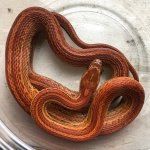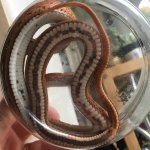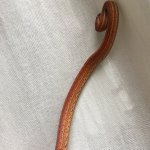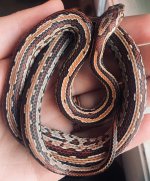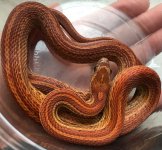xStaticSnow
New member
I picked up this guy at an expo today (my first ever expo, I’m so glad I found a friend to bring home with me). I was drawn to him right away because he his funky pattern but when I asked the breeder said he was just a normal tessera bred with a cool copper/brown wild type. My initial thought was that he is hypomelanistic... sunkissed maybe? If anyone could clear up my confusion I would be appreciative! He’s also the half brother to my okeetee tessera, so that’s cool too!

